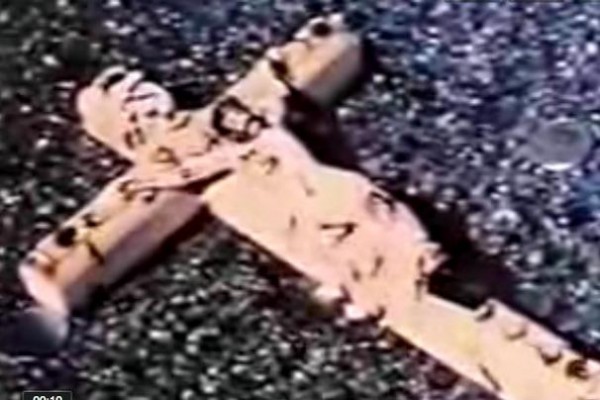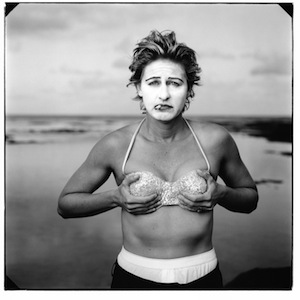-
Hate Triumphs at the Smithsonian
by Sam Biederman December 4, 2010

Art, unfortunately, imitates life.
This time it’s David Wojnarowicz who’s bearing the brunt of it. The late artist’s Fire in My Belly is currently featured in the National Portrait Gallery’s Hide/Seek: Difference and Desire in American Portraiture, a groundbreaking exhibition of images of GLBT Americans from Walt Whitman to Ellen Degeneres. Wojnarowicz’s video piece is ostensibly under fire from conservative voices, including the incoming House of Representative’s two leading Republicans, John Boehner and Eric Cantor, because it depicts a crucifix overrun with ants. Shortly after objection to the piece was raised by the Catholic League, the Smithsonian’s leadership promptly removed the piece.
It’s beyond me how Catholics in particular could take umbrage with an image of the cross used to express human suffering. After all, isn’t that what the cross represents? (And who are bigger torture fetishists than the Catholic Church? In any cathedral you’ll find icons subjected to whips and spears that wouldn’t be out of place in a Robert Mapplethorpe photo.) But the particular image under attack is merely representative of a larger issue. Don’t be fooled: this is not about religious sensitivity. This is gay hatred, period.

We should have seen it coming: the fuel was building for a while, as this past fall was a refreshingly dry season for gay-hatred. Don’t Ask Don’t Tell had been creeping towards repeal, all those “It Gets Better” Videos seemed to be gaining traction against the entrenched tradition of bullying gay teenagers, and the Smithsonian put up Hide-Seek. That a gay artist would have the audacity to appropriate a Christian image—his own cultural and spiritual heritage—was, apparently, simply too much for some. It was the match that set the kindling aflame. That’s why the criticism of the Wojnarowicz piece quickly engulfed far more than the piece itself. Even Annie Liebovitz’s tame, Vanity Fair photograph of Ellen Degeneres covering her breasts has been attacked by those questioning the show’s right to appear in a building funded by taxpayer money (apparently only straight people pay taxes).
Intolerant is too polite a word for both the citizens who are kicking and screaming about this exhibit and the politicians who are trying to gain from it. These are fag-haters—they don’t want to see portraits of fags next to portraits of Founding Fathers. That the Smithsonian didn’t stand its ground is disgraceful.
But that sinking feeling is too familiar for GLBT Americans, who since the victory of Proposition 9, seem always to get tantalizingly close to full citizenship only to have it slip out of reach. So, in art as in life: half-measures towards inclusion only add insult to injury. The Wojnarowicz piece must be returned to the exhibit—without it, Hide/Seek is fatally bruised by the Smithsonian’s pandering to the lowest exclusionary impulses of our culture.


1 Comment
Aggressive Nostalgia: On Chaos and Classicism
[...] As we progress up the spiral towards the inevitable, symbolized not only by the aforementioned Ziegler but also by Leni Riefenstahl’s show-stopping Olympia, what stands out is the clarity of the opposition between Right and Left cultural positioning. Unlike today, that is, where sexism, racism and homophobia are re-branded as one side in a ‘culture war’ for which they have neglected to show up as art, in interwar Europe there actually was a contest between two competing accounts of what painting and sculpture can and should be. Fascists, whose terrible taste is on such ample display as to achieve a kind of grim hilarity, still felt that art was worth fighting for. Today’s Right just wants it to go away. [...]